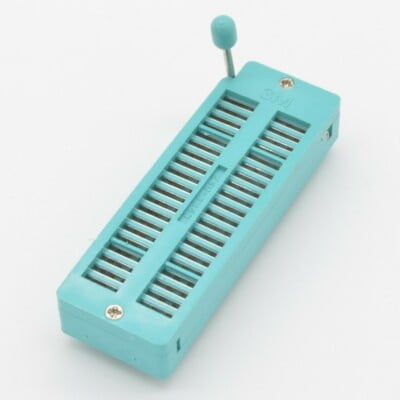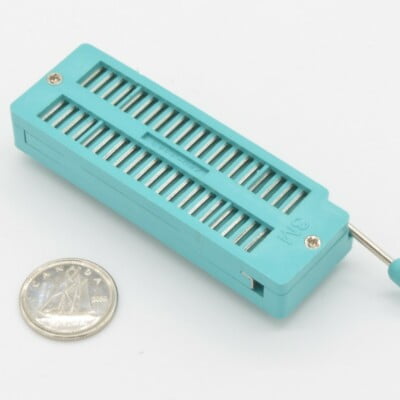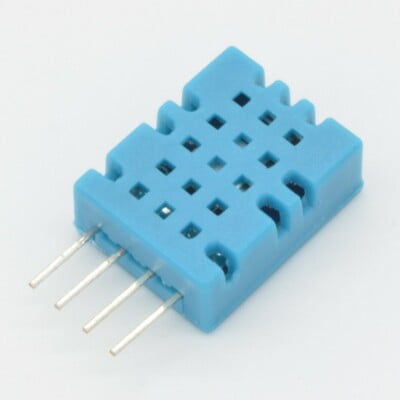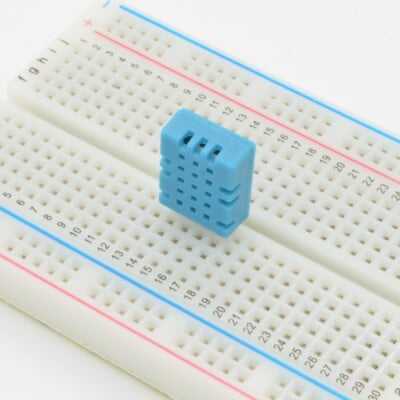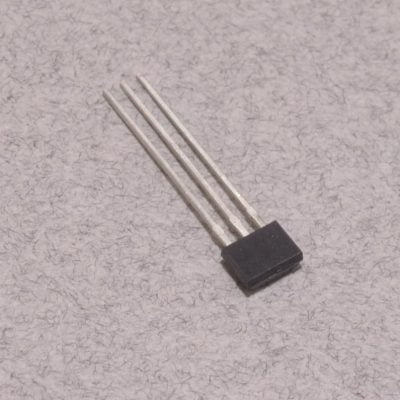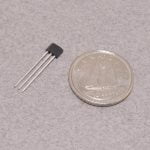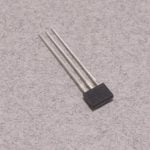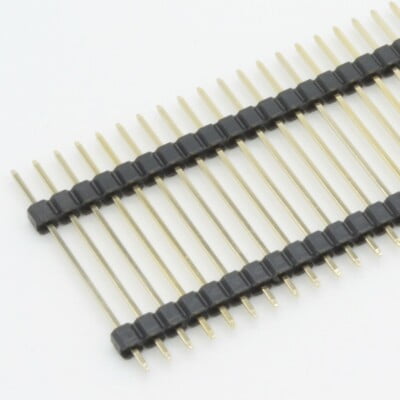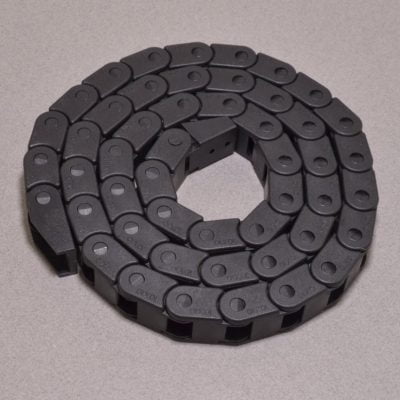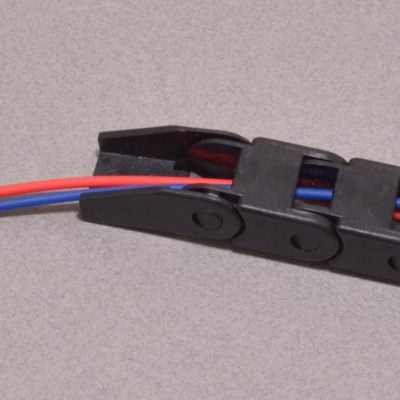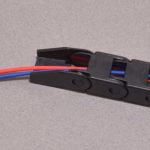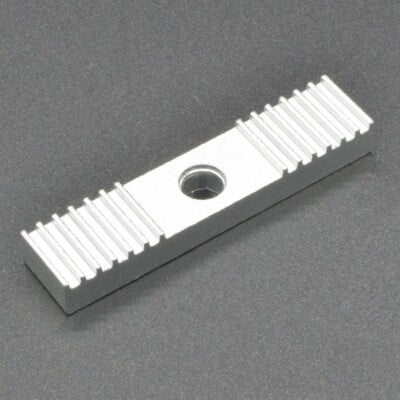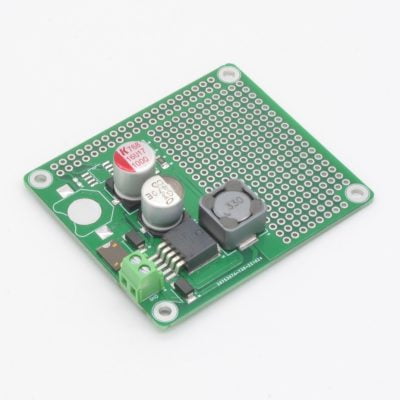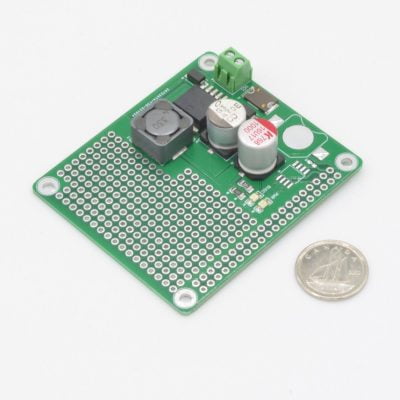New Product Roundup – April 6th
It’s Saturday and that means we are back with another New Product Roundup! This week we have six new items in the catalogue and a new Product Of The Week to share. Lets go have a look!
New Products
New to the catalogue this week, we have a larger 40 pin ZIF socket – these are great if you are programming large numbers of ICs and don’t want to mess with a conventional socket. Next up we have a couple of new sensors: A low cost DHT11 temperature and humidity sensor and a non-latching Hall-Effect sensor. In the CNC / Robotics categories we have a larger Cable Carrier to keep your cables safe and a GT2 Timing Belt Clamp. Finally, you can never have enough types of breakaway header so we added this extremely tall double stacking headers – If these don’t clear your board, maybe you shouldn’t be stacking it!
Product Of The Week
Product of the week is on one of our own designs: the Raspberry Pi Power HAT is designed to provide clean 5V power to your Raspberry Pi. Simply connect your 7-16VDC source and this board will keep your Pi3+ happy running under heavy load all day long! 15% Off until Friday at Midnight – so don’t miss out!
|
40-Pin ZIF SocketA ZIF (Zero Insertion Force Socket) allows you to insert and remove chips easily from an existing circuits. These are often used for chip programmers or when you need to test a chip without damaging it. Move the lever up and chips drop right in. Move the lever down to 'latch' the chip in place. This socket is designed for DIP chips of up to 40 pins and 0.6″ wide, and works well with common 0.3″ chips such as the ATMEGA328p.
|
|
|
DHT11 Temperature / Humidity SensorThe DHT11 is a basic, low-cost, digital temperature and humidity sensor. Inside it has a capacitive humidity sensor and thermistor to measure the surrounding air, and spits out a digital signal on the data pin (no analog input pins needed).
|
|
|
Hall Sensor – AH1815The AH1815 Hall-Effect sensor is a small, non-latching, magnetic actuated switch. These can be used to detect the presence of a magnet and are often found in wheel encoders, flow sensors, and other non-contact switches. These operate very similar to a Reed Switch, but are considerably smaller. However, it should be noted that Reed Switches can typically carry more current. This sensor operates on 2.5 – 5.5VDC and consumes just 24uW @ 3V. |
|
|
40 Pin Breakaway Double Stacking HeaderThese extremely tall breadboard compatible 0.100″ breakaway headers are great when you need some serious space between boards! Breakaway Headers are a great way to connect small perf-boards or breakout boards to a breadboard or other 0.100″ pitch board. The headers ship as a single 40 pin piece that can easy be snapped apart to any length required. One end with shorter pins will typically be soldered into a circuit board while the side with longer pins will fit into standard Female headers.
|
Cable Carrier – 10mmx10mm – 1MThis assembly of small plastic links is normally used to protect and organize cables. They are commonly found on CNC machines and other industrial equipment where cables are moved back and forth in a single direction. Cable carriers (also known as drag chains) are perfect for preventing lose wires from snagging or becoming tangled in machinery! This measures 10 x 10mm internally and will fit several large wires or preassembled cables. Each piece measures 1 meter long but carrier links can be removed or additional sections can be added to create the exact length required. End links can also be flipped depending on how they need to be mounted. |
|
|
GT2 Timing Belt ClampClamping point to point belts securely can be a bit of an issue – this simple toothed clamp is the solution! The clamp has GT2 Tooth spacing and will tightly grab any standard GT2 Belt. Ideal for use on belts for moving gantries such as laser cutters and 3D printers.
|
[one_third]
Product Of The Week – 15% Off
-
Raspberry Pi Power HAT
$21.95
[/one_third]
[two_third_last]
New Tutorial!
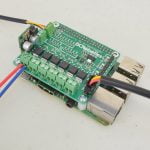 Raspberry Pi Irrigation Control – Part 1
Raspberry Pi Irrigation Control – Part 1
In this multipart project tutorial we will be building a Raspberry Pi based Irrigation Controller using our Raspberry Pi IrrigationHAT. Part one of this four part tutorial focuses on the assembly and hookup of the board. Interested? Head on over to the tutorial!
[/two_third_last]

